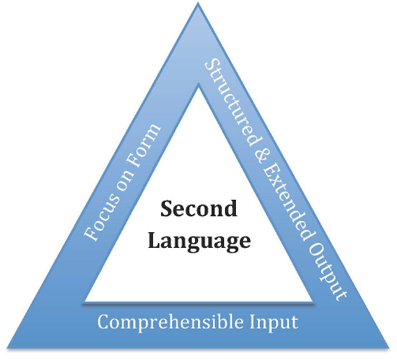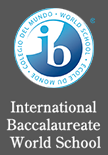Immersion Education & Bilingualism
Learning in an Immersion Program

In our English Immersion Program, language teaching is at the center of our instructional approach. Our Immersion Program is an intensive form of “content-based instruction” in which we integrate the content and skills of the academic subjects from the Japanese national curriculum with English language proficiency goals. Through this process students concurrently learn the specific content, skills and concepts of each subject and acquire English language skills.
However, immersion is not simply teaching the regular academic content through a foreign language. In order for students to acquire the skills and concepts of the academic program AND acquire functional proficiency in English, teachers must work within a distinct instructional framework. This instructional framework consists of three general principles derived from second language research and includes various instructional strategies that exemplify these principles.
The core principles of instruction in our program consists of three basic principles:
- Comprehensible Input
- Structured & Extended Opportunities for Output
- Focus on Form
Comprehensible Input is essential to both academic achievement and second language development. In order for language learning to occur, input should be at or just slightly above the learner’s current level of proficiency. Teachers in our program do this by:
- Adapting Language to the Learner’s Level of Proficiency
- Scaffolding instruction by making concepts more visual or concrete with ‘hands-on” activities
- Building on and connecting to past learning
- Constantly checking for understanding
Structured & Extended Output is important because traditional teacher-fronted, lecture-based question and answer sessions do not provide the number or kinds of opportunities needed for L2 language development. By providing learners with opportunities for output students are pushed to deeper levels of language processing. Students must go beyond passive comprehension of the language and develop the ability to communicate their thoughts and ideas in English. Some examples of this include:
- Frequent use of pair work and small group discussion
- Student presentations
- Cooperative learning activities that require student participation and discussion
- Student-centered and inquiry-based tasks that require students to identify problems, ask questions, and create solutions.
Focus on Form is critical to helping students develop high levels of proficiency and produce language with greater grammatical accuracy. Teachers do this in sevearal ways:
- Plan activities that draw attention to grammatical forms that students are struggling with and provide meaningful opportunities to use these more difficult forms orally and in writing.
- Create activities that require the students to use specific language patterns so that students how to use the correct forms in meaningful, communicative contexts.
- Help students to identify and correct their own language errors.
- Provide focused and systematic feedback on frequent language errors.

